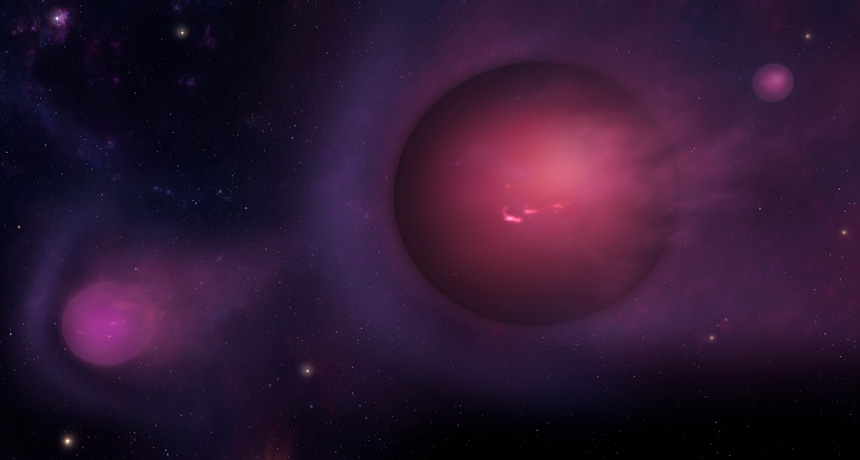Milky Way’s black hole may hurl galactic spitballs our way
Giant gas blobs are what’s left of gravity-shredded stars

DUCK! Blobs of gas roughly the mass of Jupiter (several illustrated) could form near the black hole at the center of the Milky Way and shoot into intergalactic space.
Mark A. Garlick/CfA







